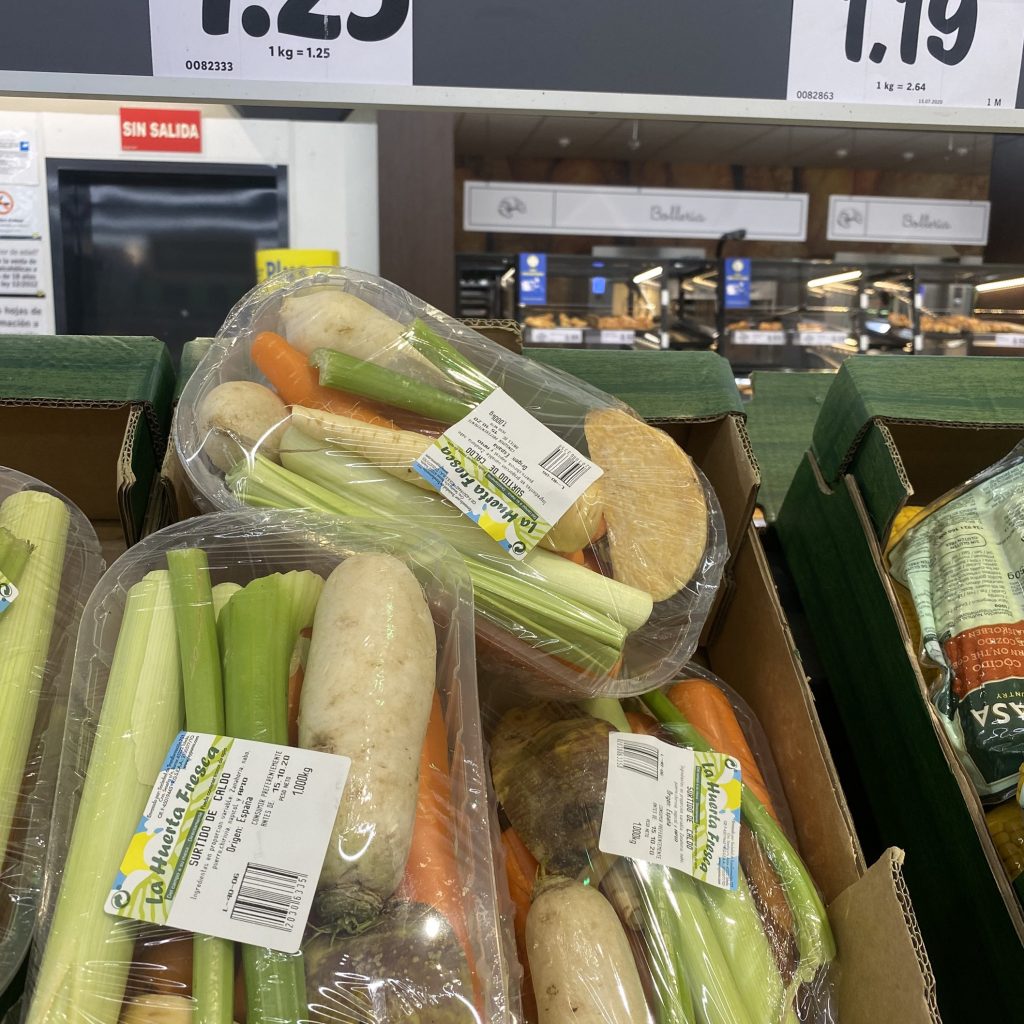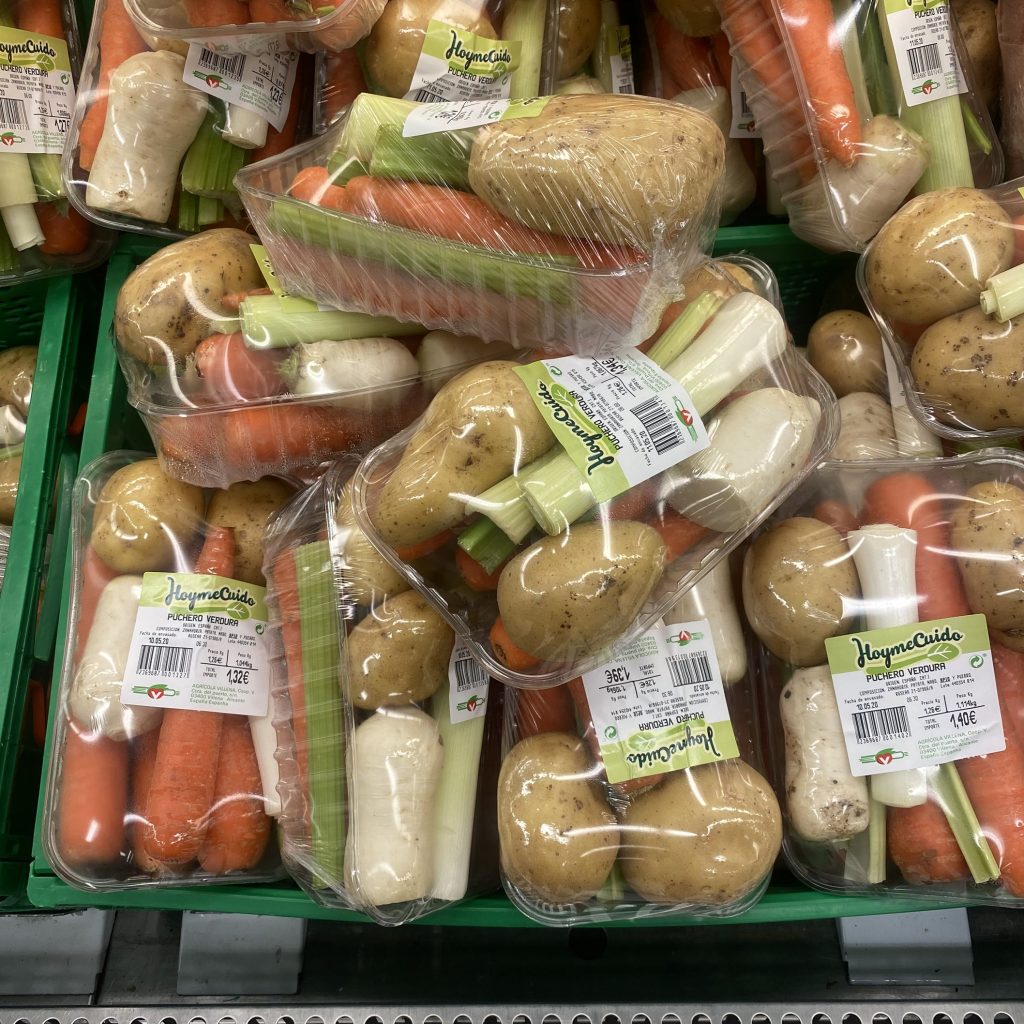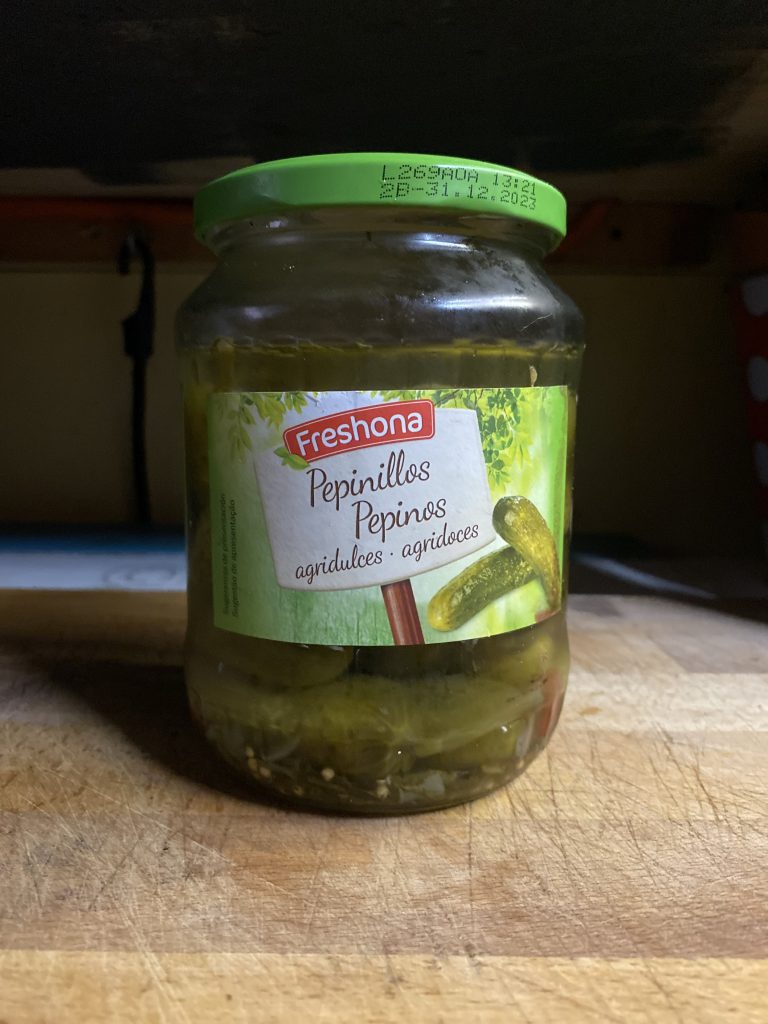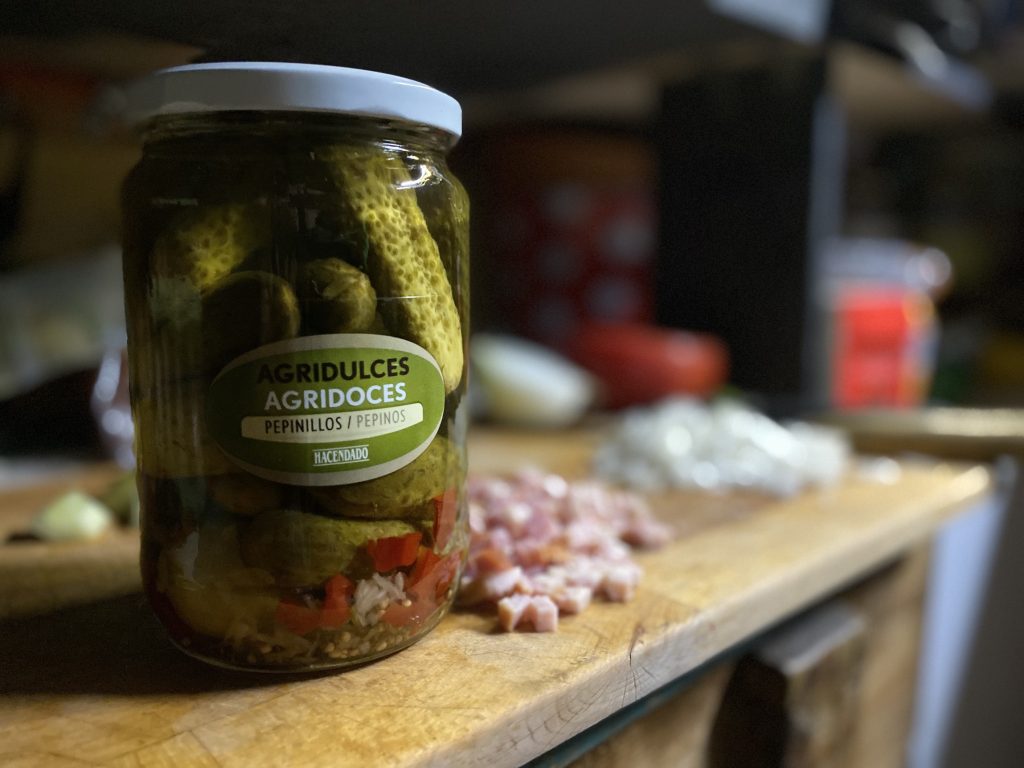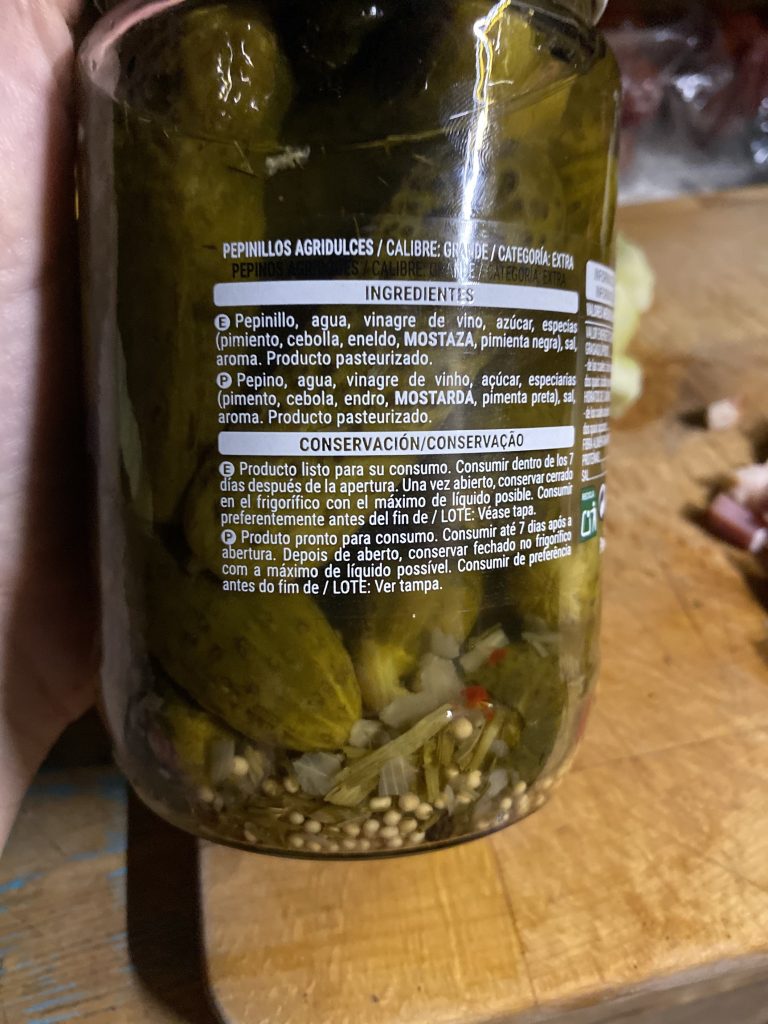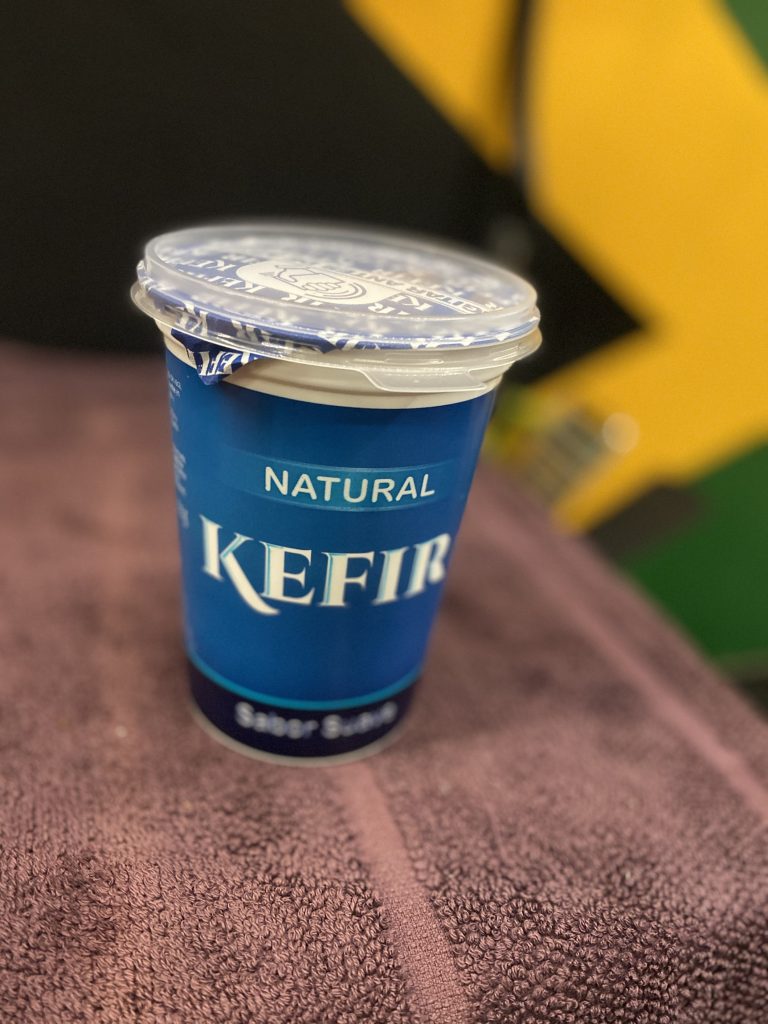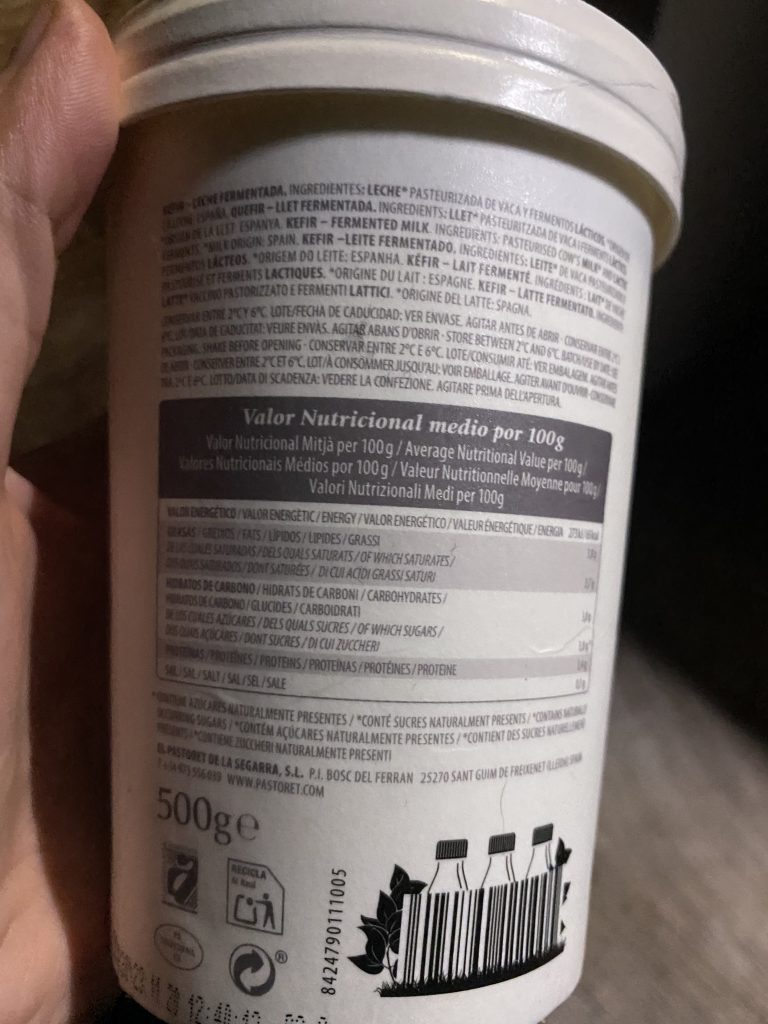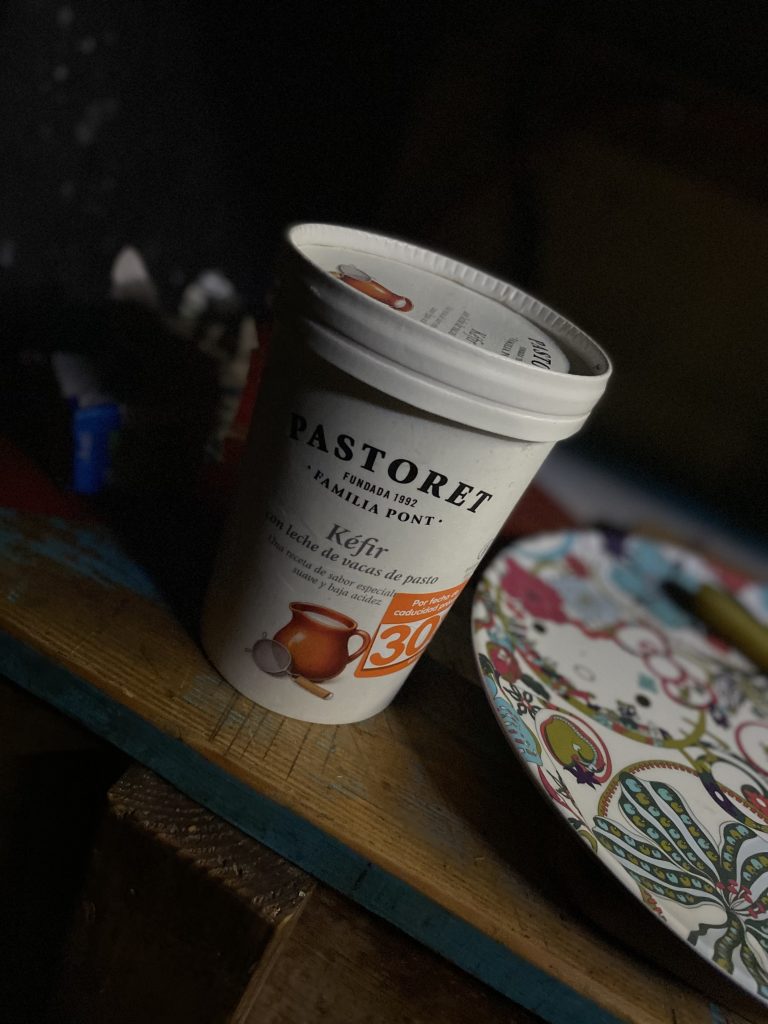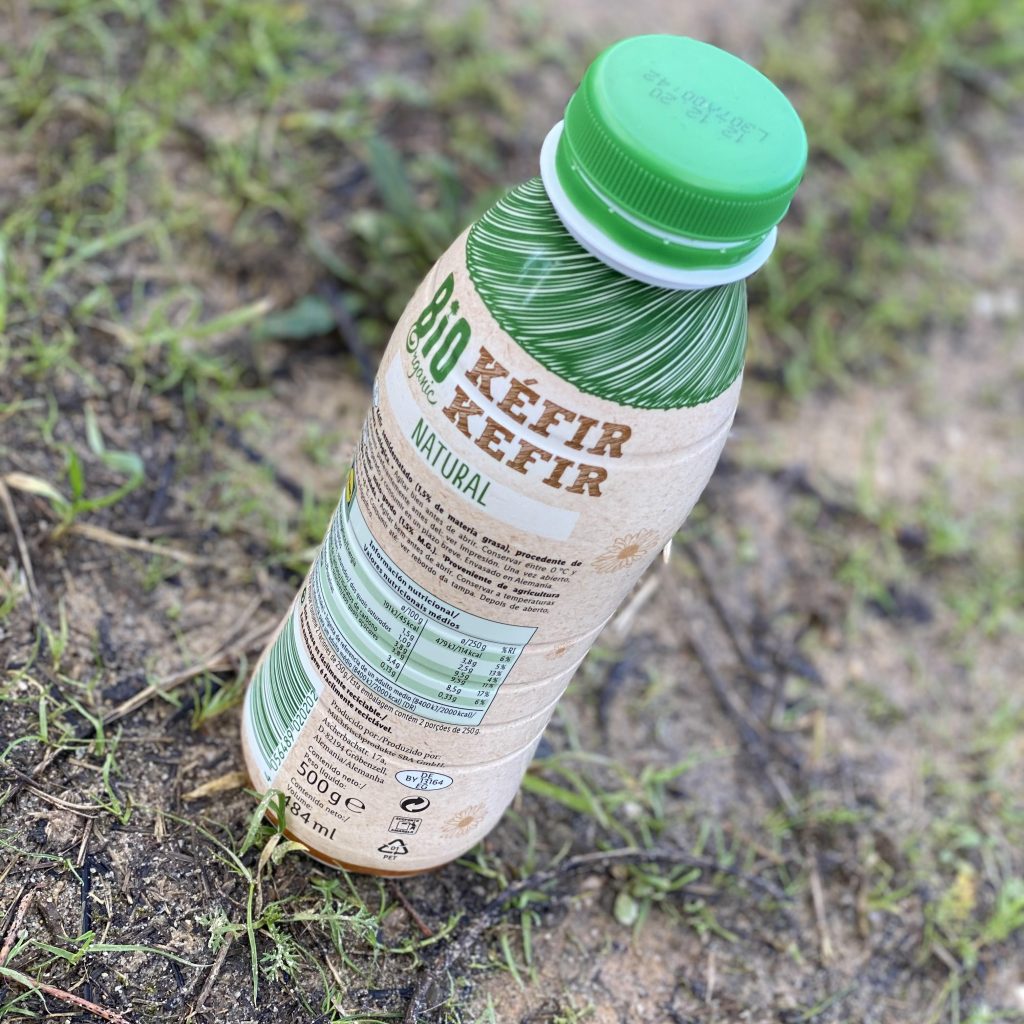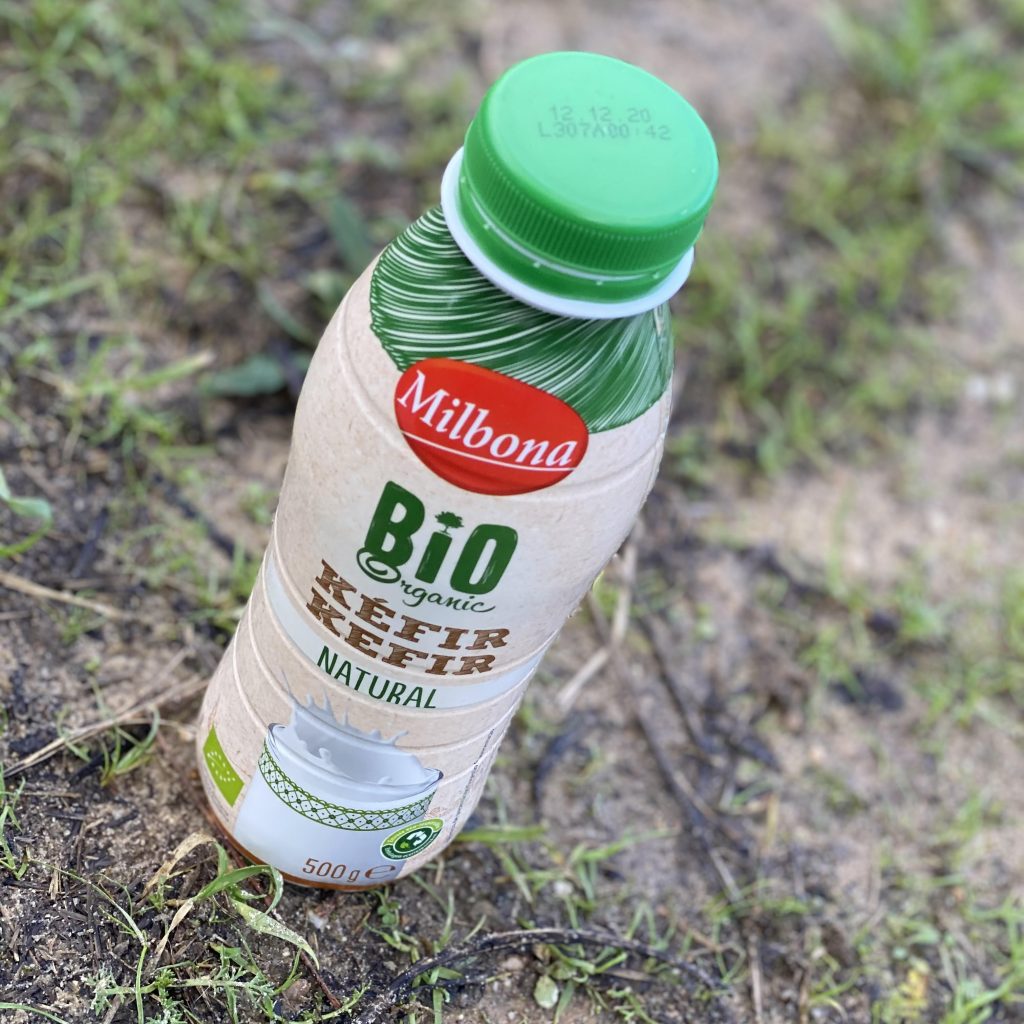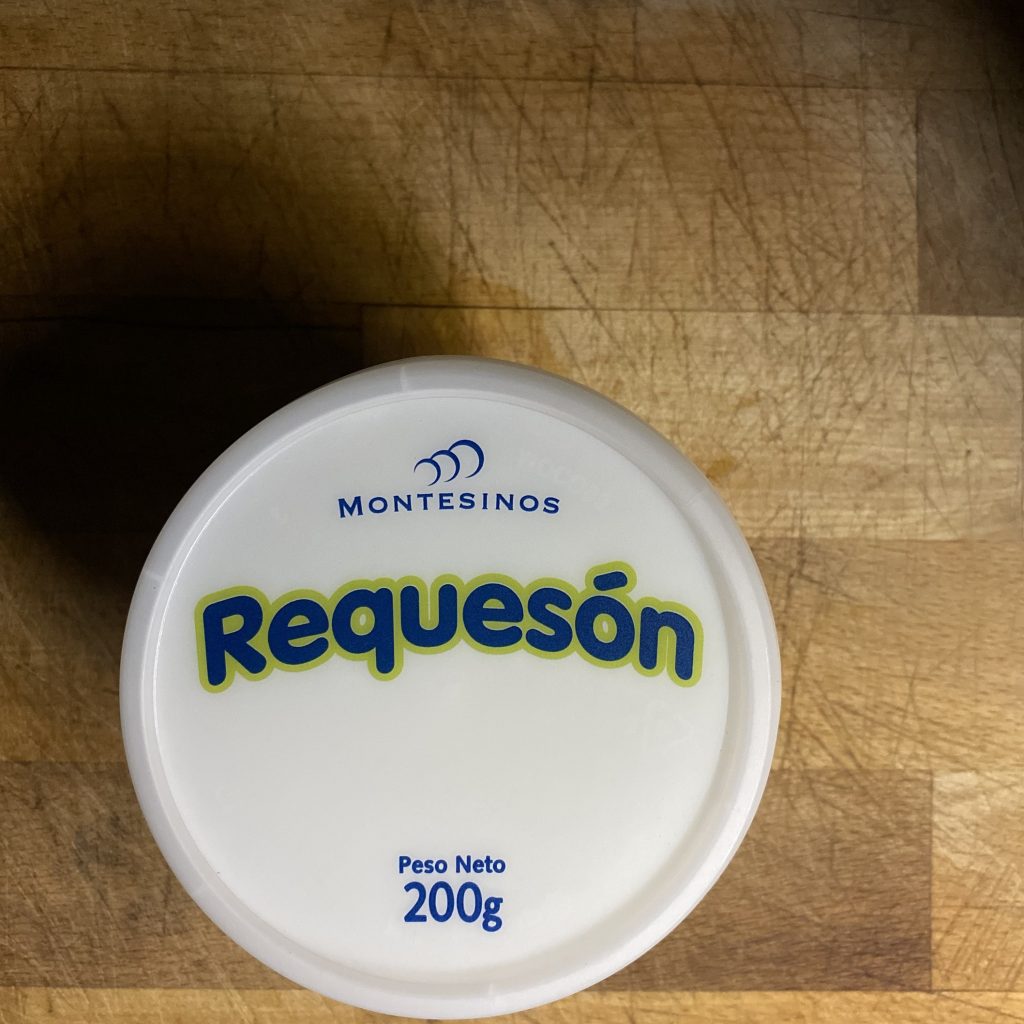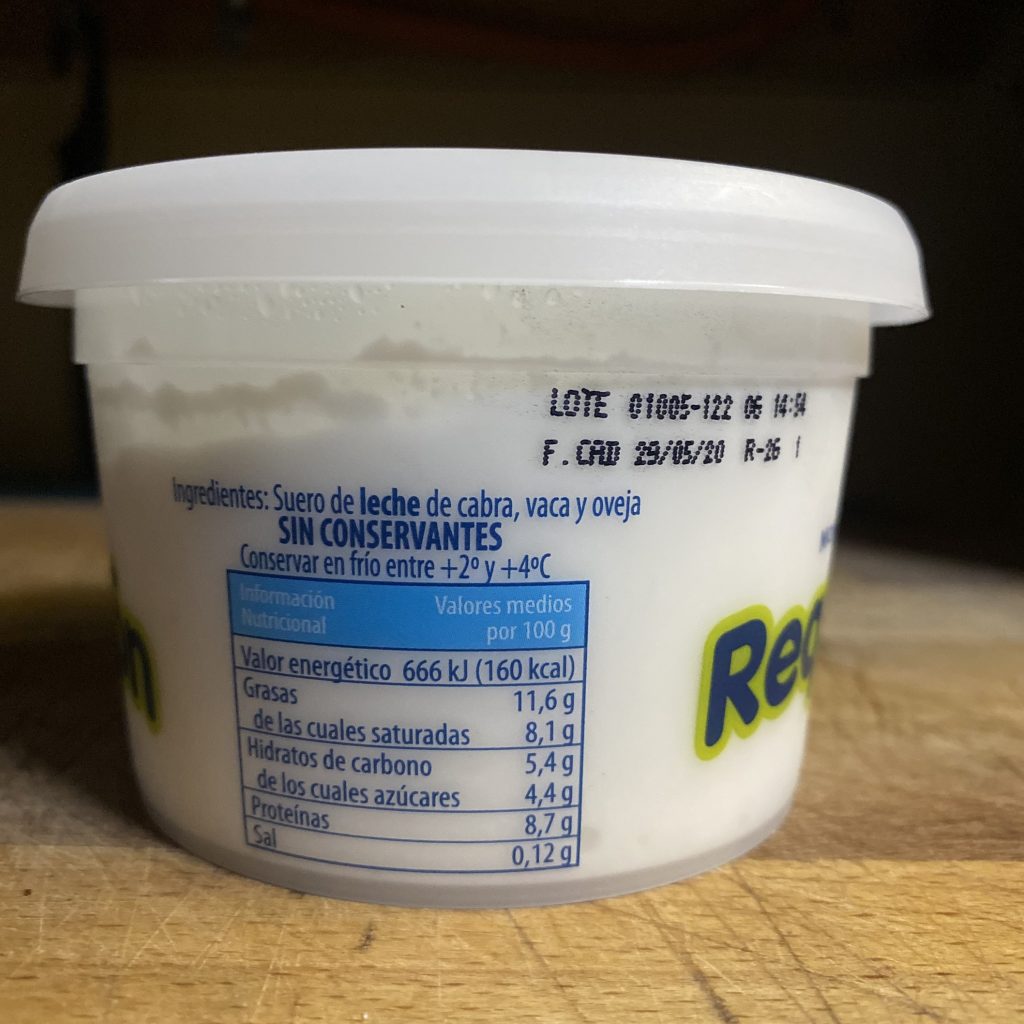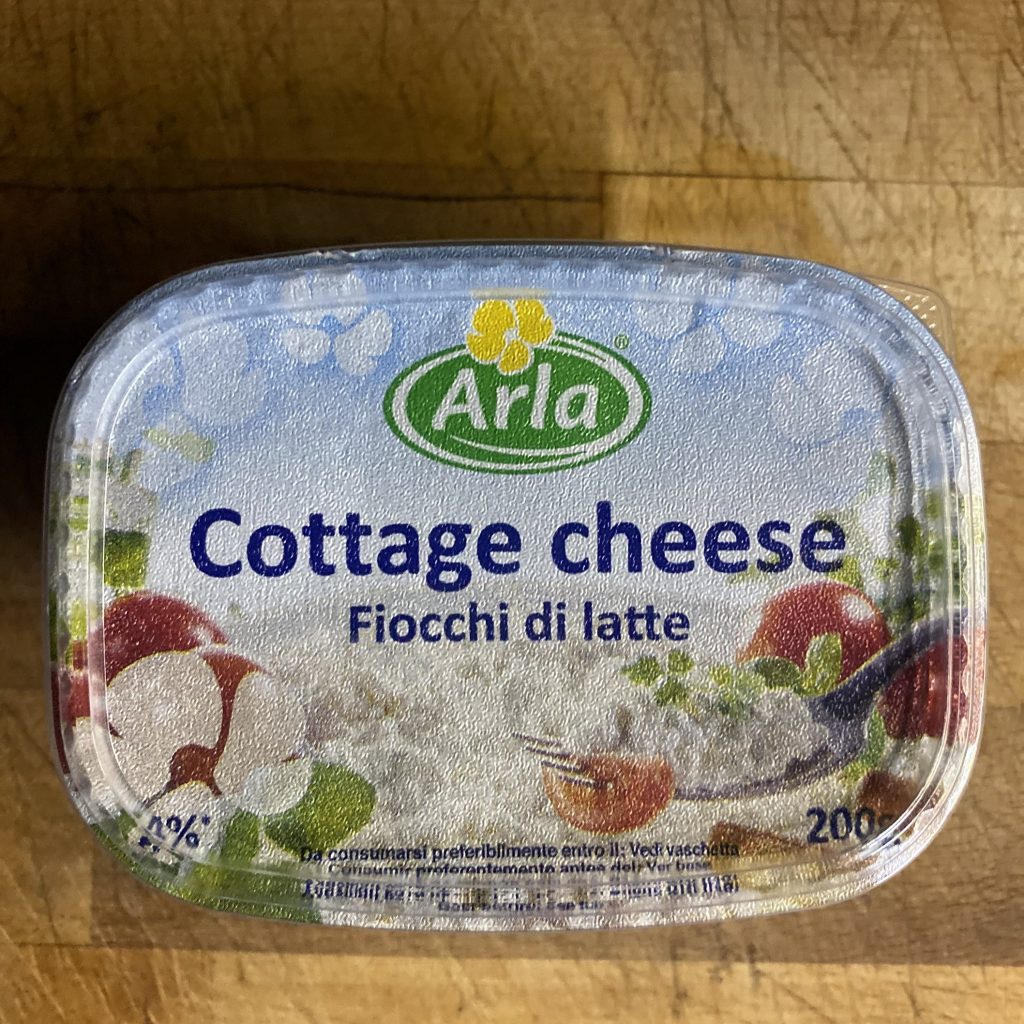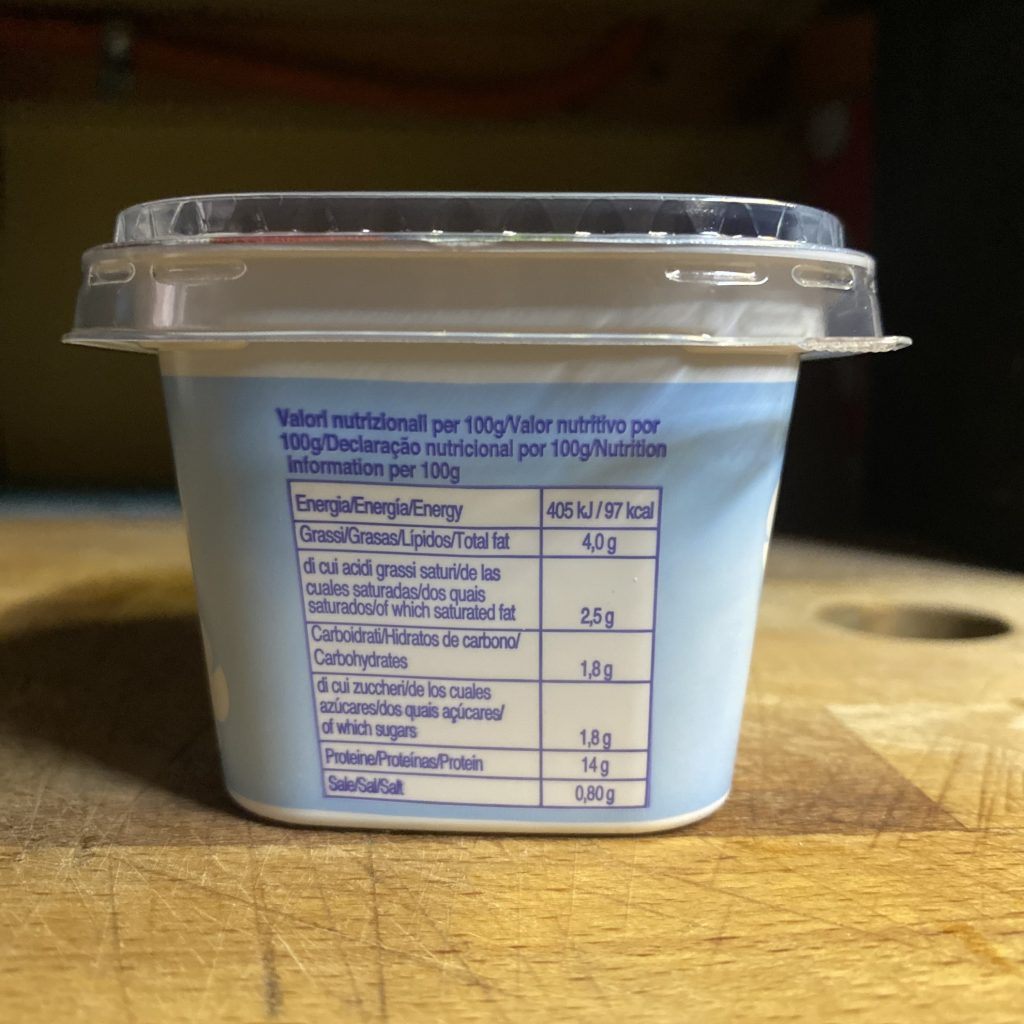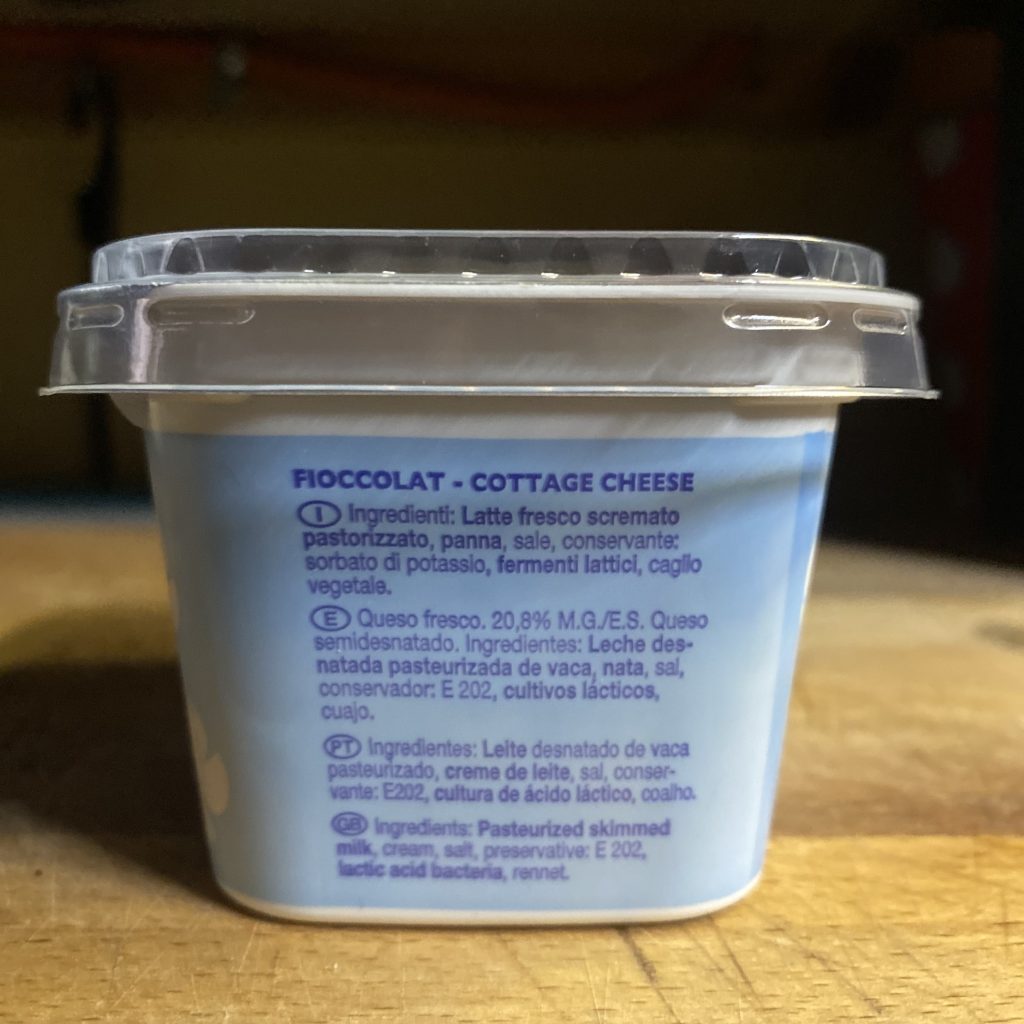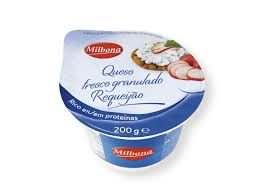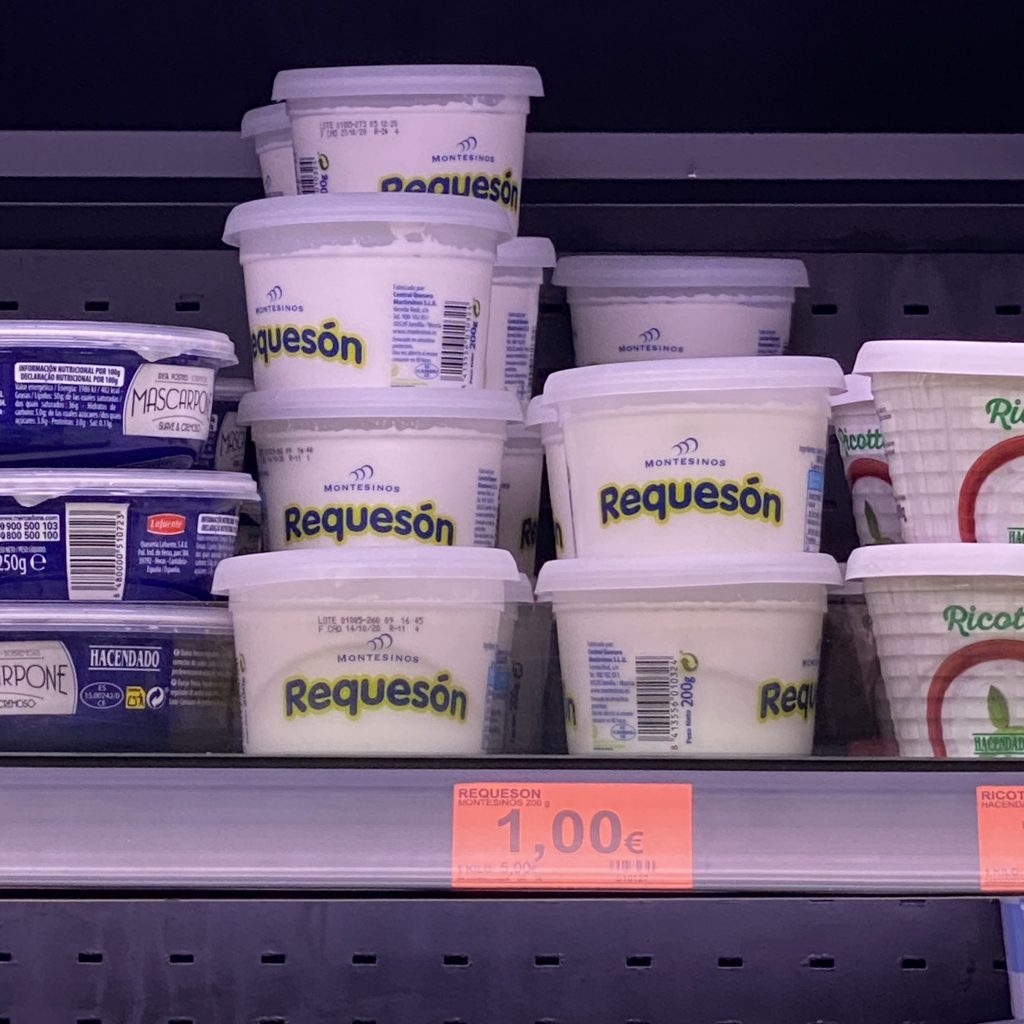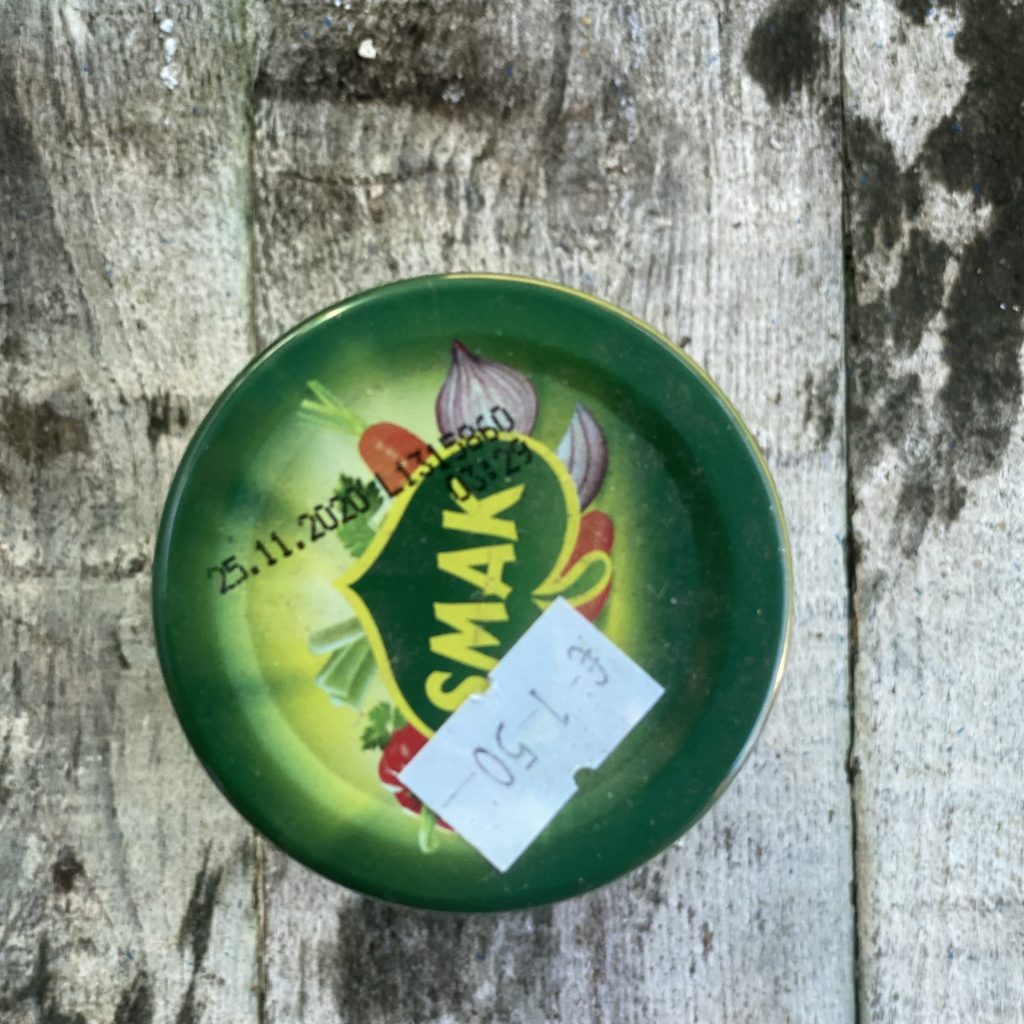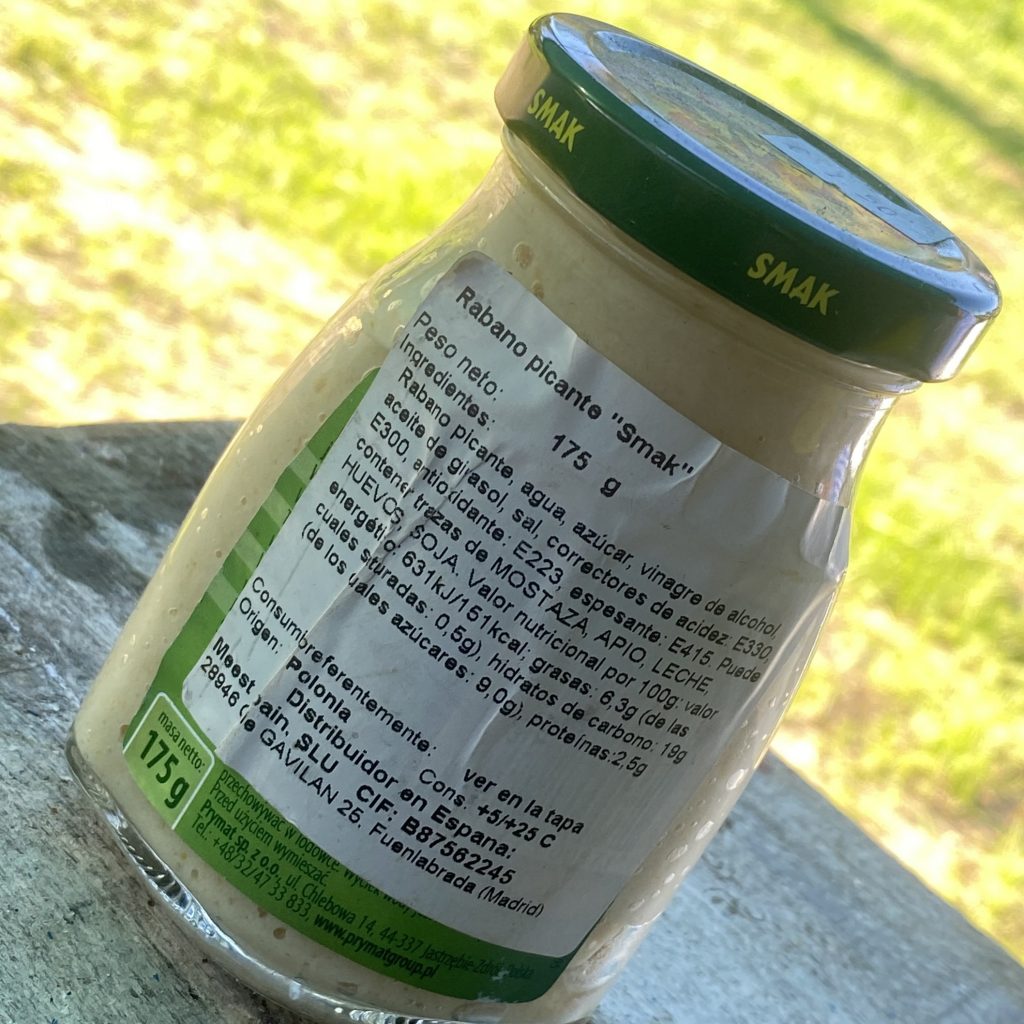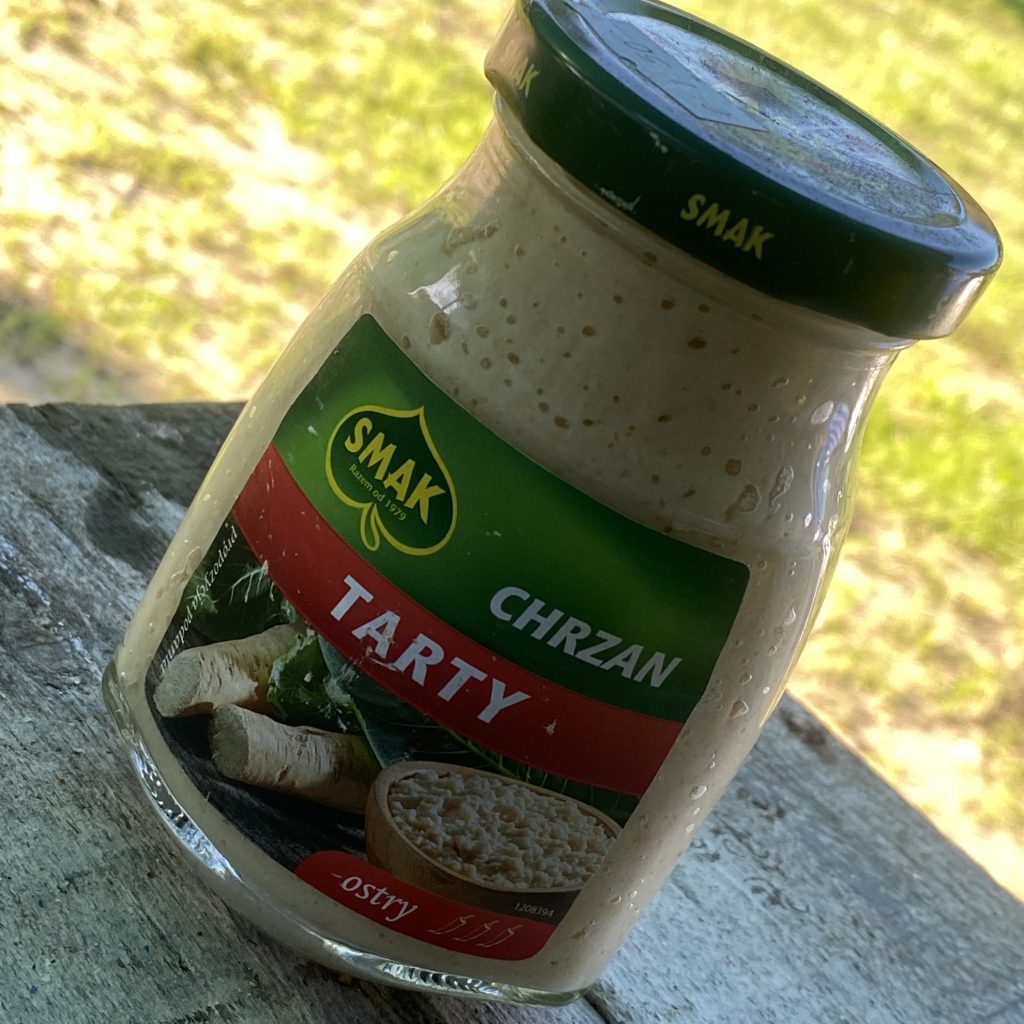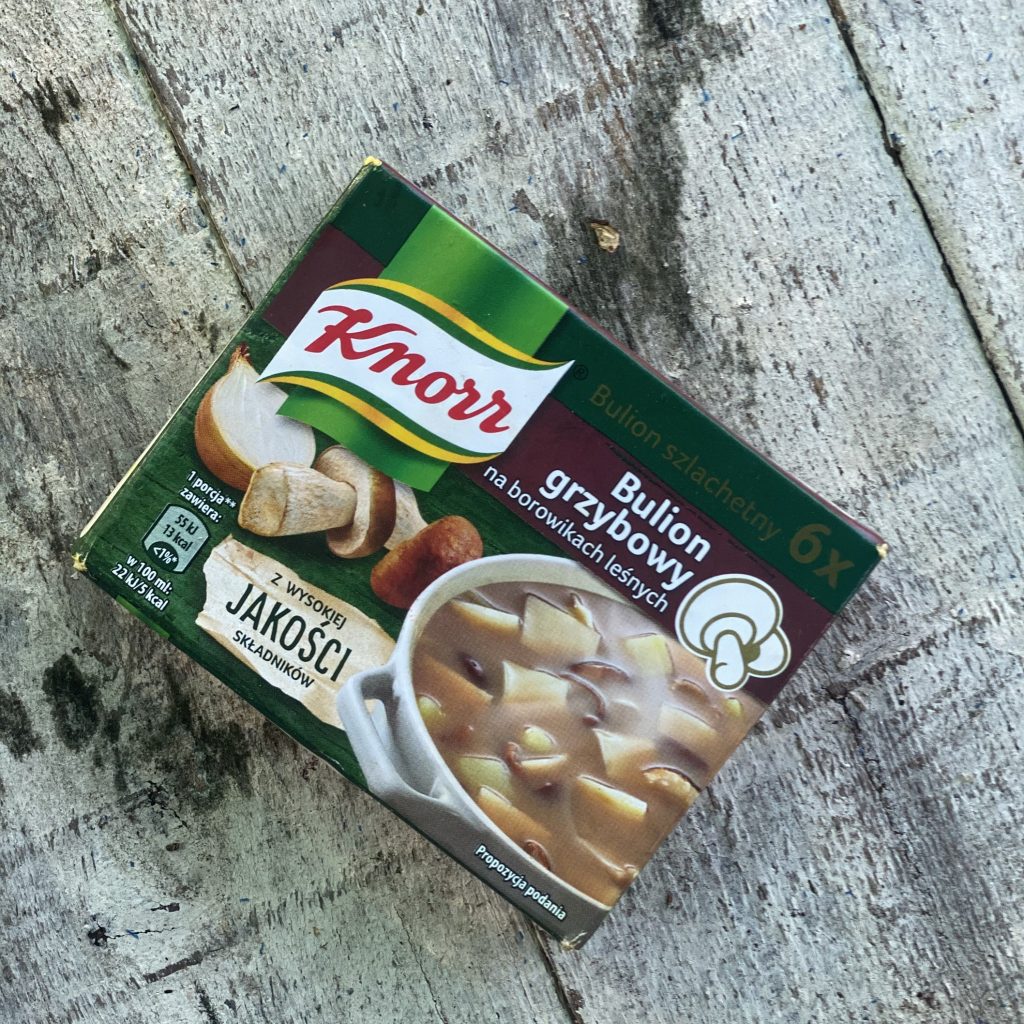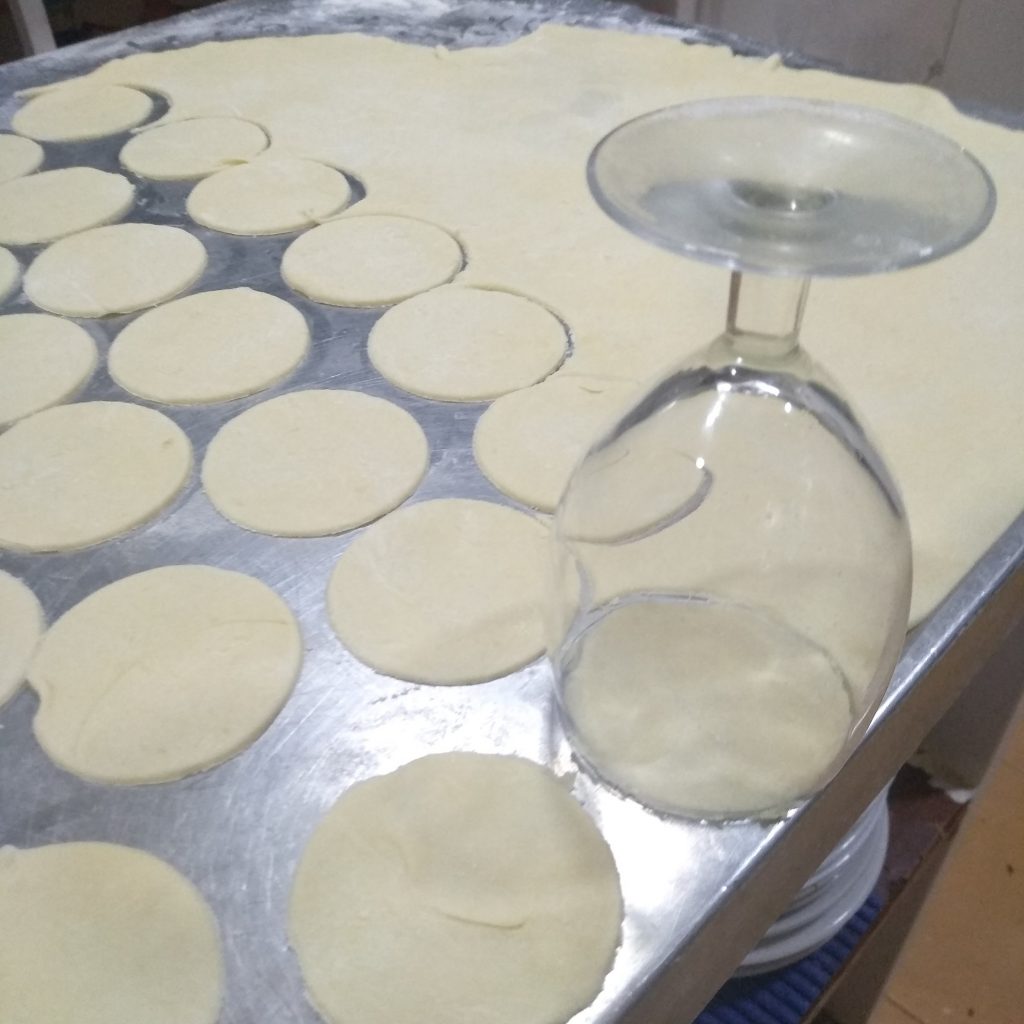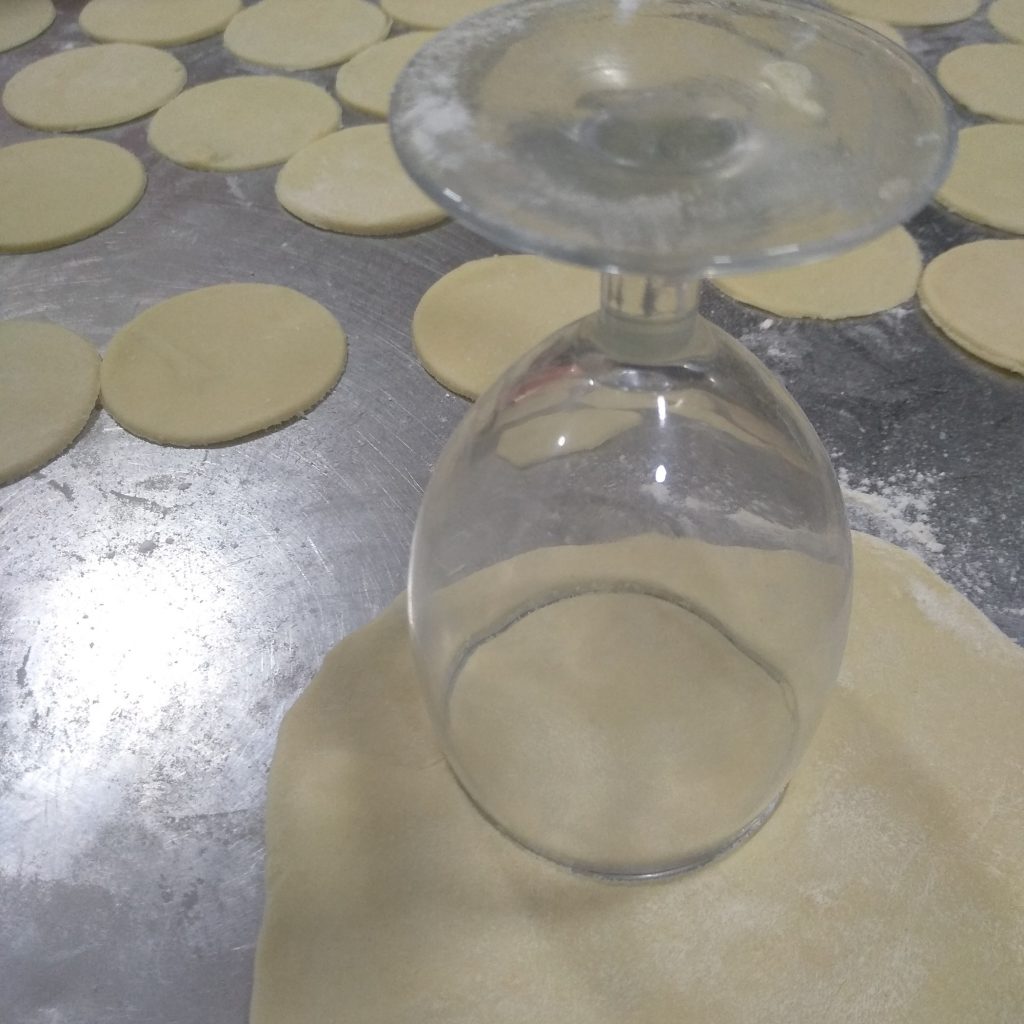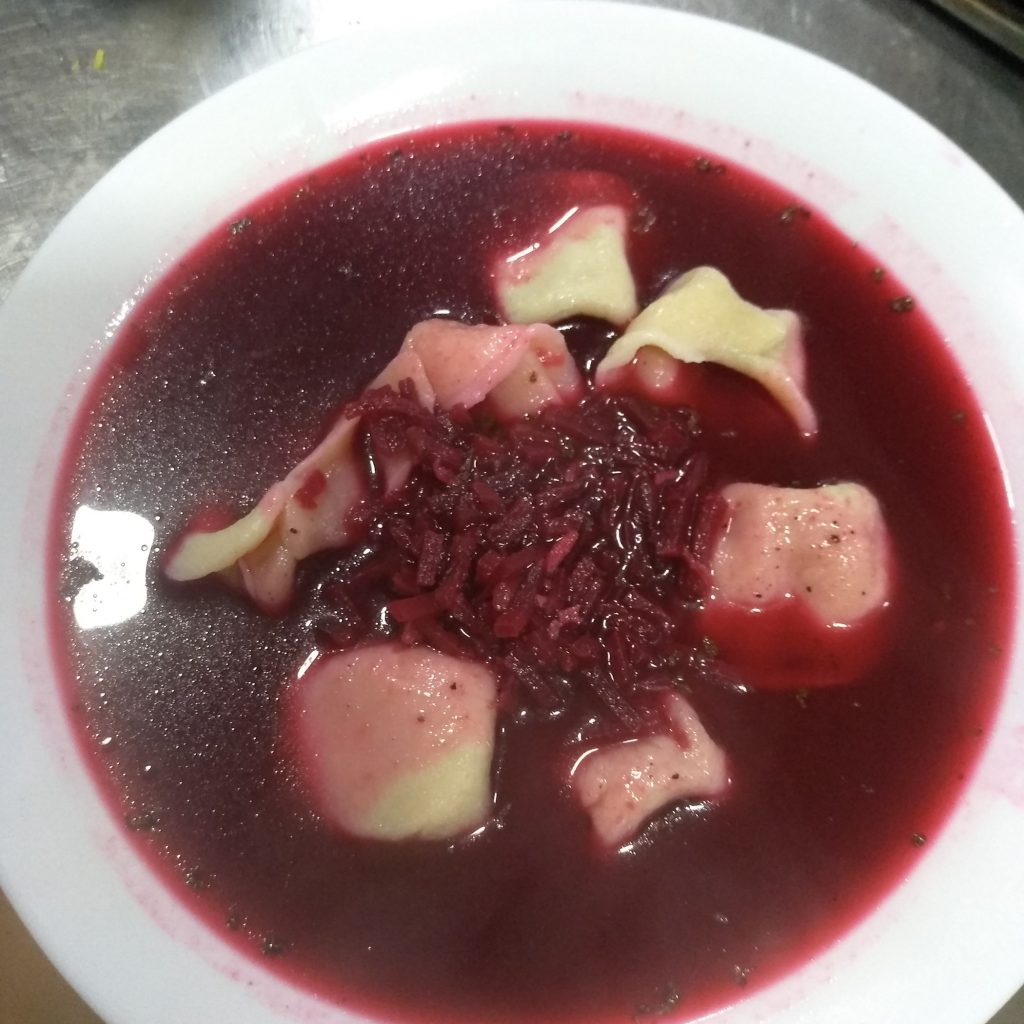
Leather handicraft straight from the workshop on four wheels
Wandering through Iberian lands
Food – what Spaniards don’t eat that we love in Poland and how you can replace it with something else and where to look for it.
04/12/2020 12:57 PM
Today's article will be about various food products that are available in almost every store in Poland, and sometimes even impossible to get in Spain. Personally, I love Iberian cuisine, but sometimes I feel like eating some typical Polish flavors, so I'm looking for substitutes, equivalents and ... Polish shops!
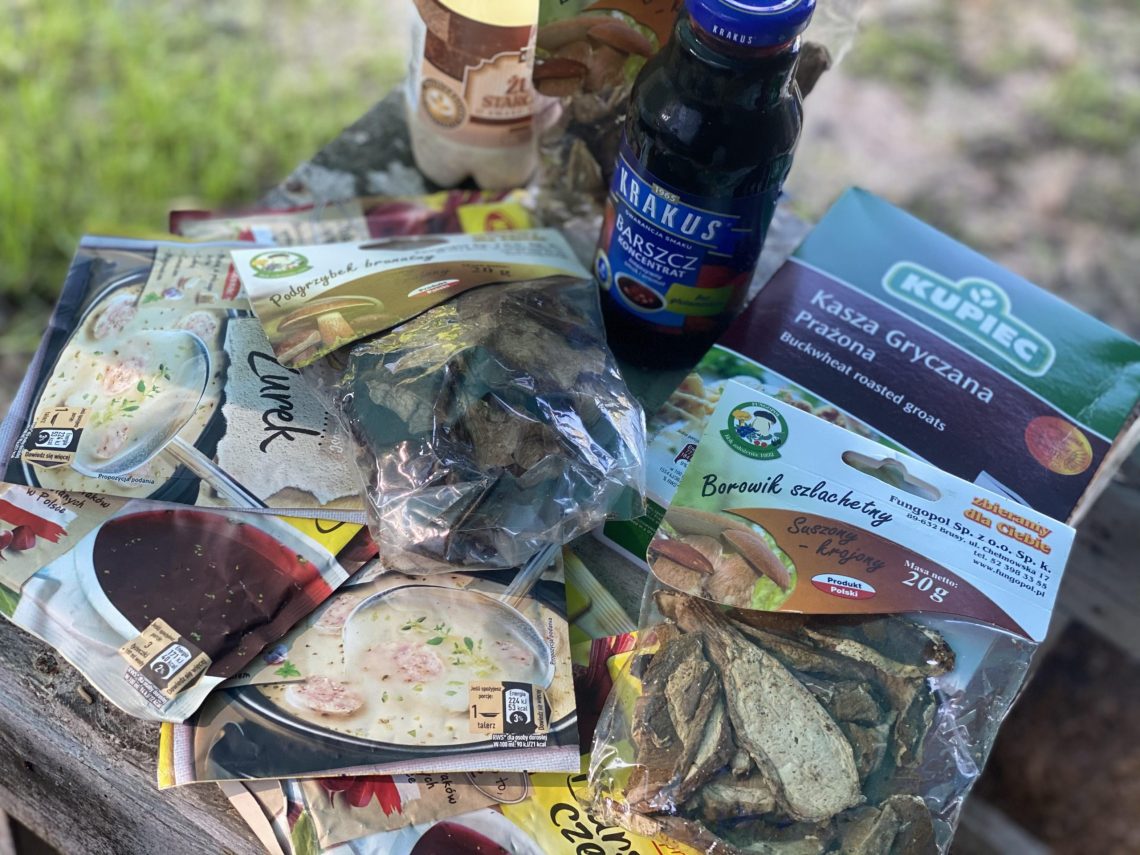
As you probabbly know (or not) we come from Poland and we’ve lived in a van for a over 4 years, mainly in Spain and Portugal. During our journey we’ve realised there are some products that are easily accesible in every shop in our homeland, but here in Spain are either not popular or not known at all. We believe it’s the same with some products you have in the UK or in the USA so all the comments are obviously welcome. Some of the products we mention are no that popular in your country either, but we thought we prefer to translate anyway, just like all the other entries on out blog.
Let me start with the fact that after leaving our beautiful country and moving to the Iberian Peninsula, I stopped taking care of my diet and using any cosmetics (after three years it's time for a great comeback of oils and natural cosmetics, but more on that another time). I lost weight, felt better, my asthma ceased and the condition of my skin improved. Why? Because where we usually stay and where we live, food, even without the eco label, is eco and is of good quality. It is healthy, fresh and simply better. The Mediterranean diet can be easily digestible (Spaniards, unfortunately, often do not appreciate what they have and serve everything in seaside restaurants or bars fried in deep oil), it is based on fish and seafood, vegetables, fruit and not too much meat. Everything is fresh and available at very affordable prices (e.g. 4 kg of oranges in high season, i.e. around February-March, it costs 1.50 EUR)
Sometimes, however, we do miss our typical the sour rye soup żurek and, although we do not celebrate Christmas, I cannot imagine Christmas without barszcz – borscht (a beetroot soup) with dumplings called uszka. And then what to do if we feel like eating Polish products?
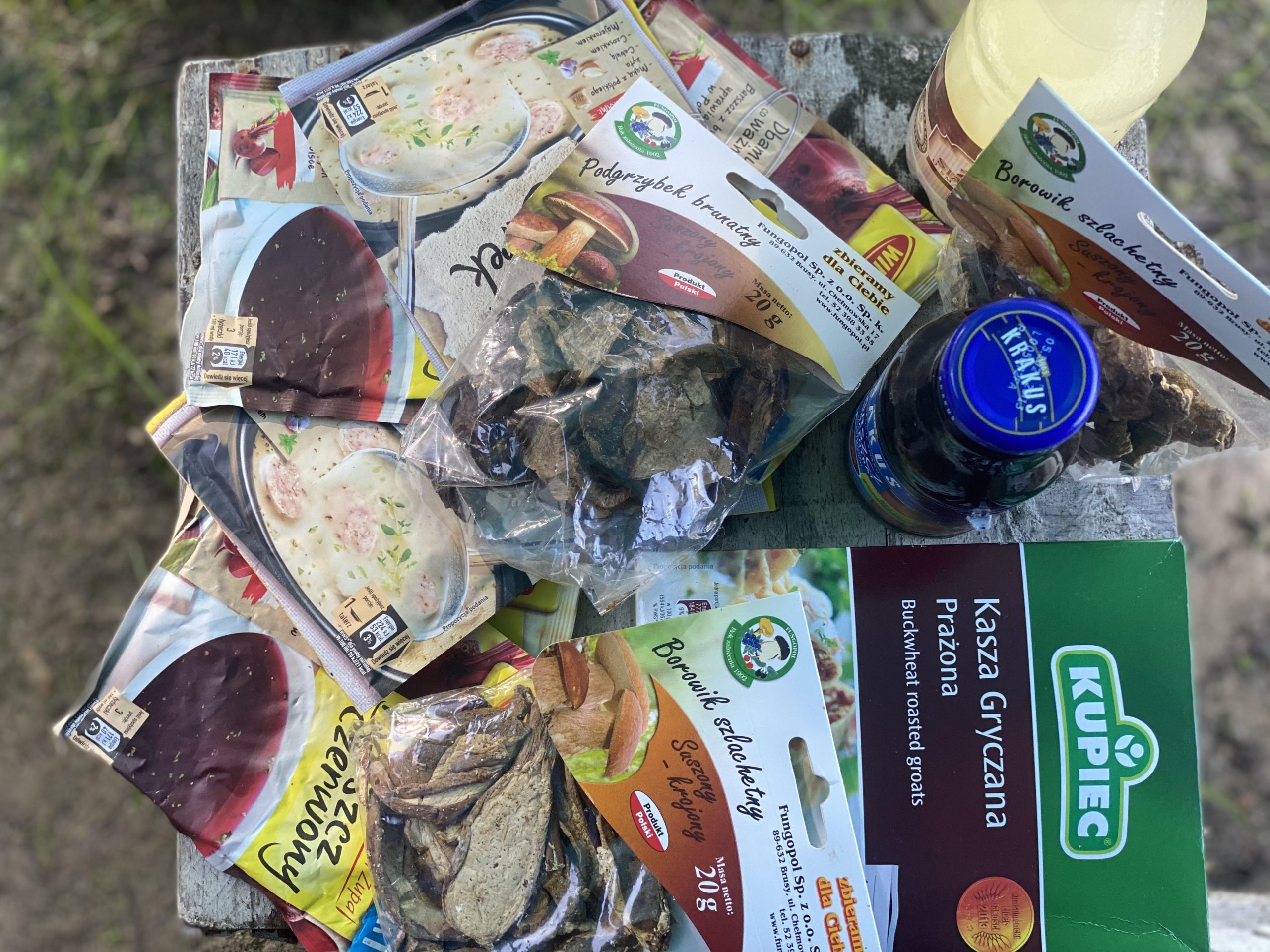
Before we get to the real content - our articles mainly concern Andalusia and the Canary Islands, because we stayed there the longest, perhaps in the central and northern part of the country, or in Catalonia, the products we are talking about are generally available.
Surprisingly, it is very difficult to get chives here (in Spanish called cebollino). Sometimes it is available in supermarkets, but at such a price that it makes no sense to buy it (in the picture below from Mercadona, the box of 20g costs between EUR 1 and EUR 1.5). If we know a good greengrocer, we have a chance to get chives, but it is quite rare. An alternative is ajillo (ajo in Spanish means garlic, so ajillo is like a diminutive) - a bit thicker and spicier in taste than chives, but this difference is lost in the dishes. Unfortunately, ajillo is as difficult (or even more) to obtain as chives (I saw ajillo last time in Tenerife).
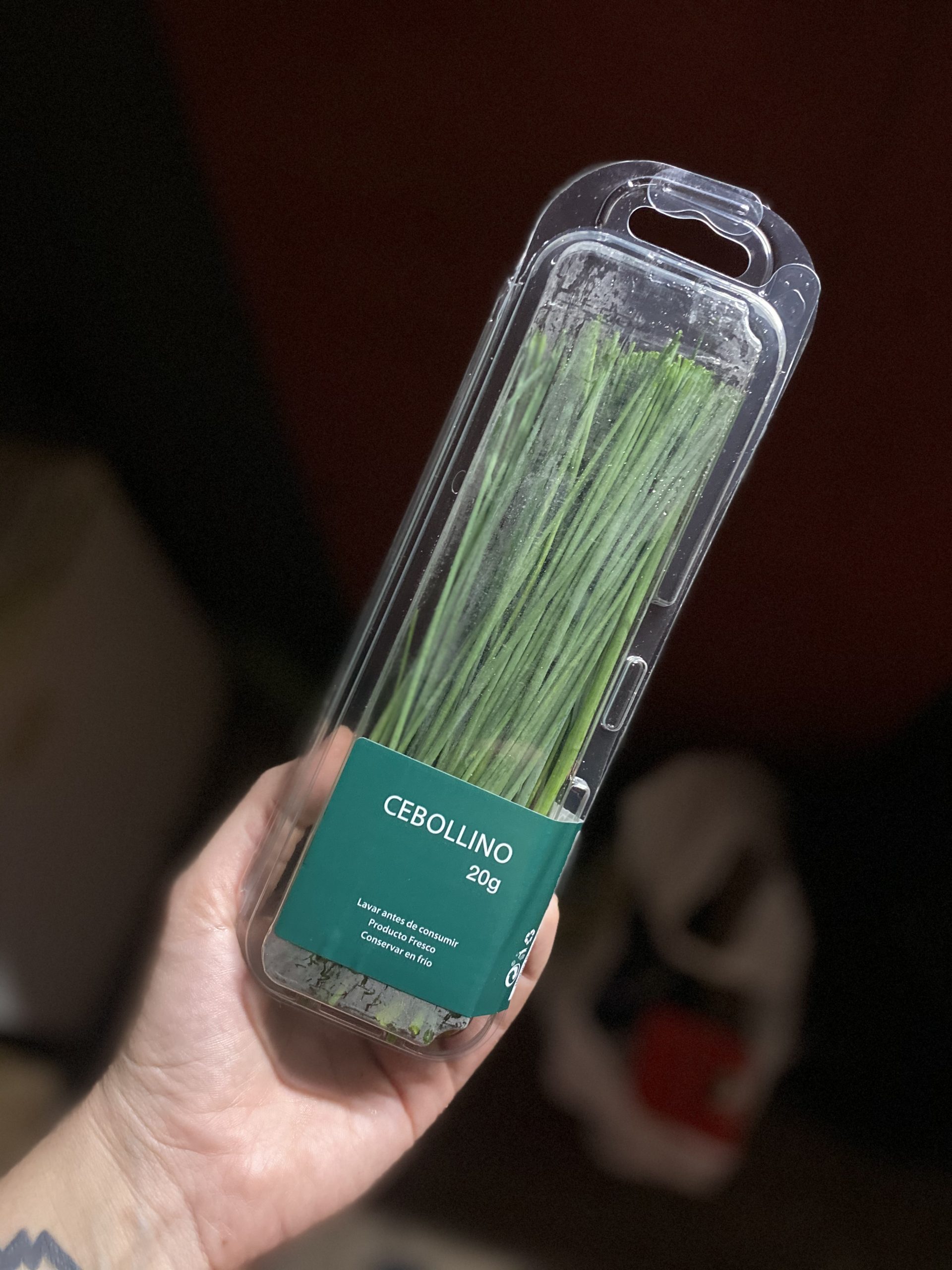
Another surprise for us was that the root of celery or of parsley are not eaten here. The basis of most of our soups is broth, and how can you make a good broth with such deficiencies? Spain has its own caldo vegetable set (caldo = broth), in which instead of celery we find a radish or turnip, and instead of parsley, usually a pumpkin. Often the set also includes potatoes, because it is intended more for puchero than our classic soup base. But for the stubborn there is a solution - sometimes celery and parsley in the root are also found in the greengrocer, especially if it is located next to a Romanian-Arab-Polish "zone".
Sour rye soup (called in Polish żurek) does not exist here, of course, you need to check out a Polish shop because rye flour is also hard to find (unless it is terribly expensive in the organic version), so it will be difficult to make sourdough yourself. An example price in a Polish store is EUR 2.30 for 300 ml of Krakus sourdough. The same applies to pickled cucumbers but you have to bear in mind that normal pickles are available everywhere, we make a very sour version that is much more popular in the eastern Europe than anywhere else. They are available only in Polish stores (example price 2 EUR for 500g). You can, of course, try to pickle yourself, but it is worth testing first the cucumbers themselves, which have a slightly different taste and remember that it will be difficult (but not impossible) to get fennel. My grandmother always added an oak leaf to the jars to make the cucumbers more crunchy - there are no trees in this beautiful country either, e.g. in Tenerife there are actually only pine trees (except from the north which is much more green) they grow above 1500 m above sea level, apparently there are no trees on Fuertaventura 🙂 Normal pickled cucumbers are available, my favorites can be bought in Lidl (the first picture on the left), but the ones from Mercadona are also not bad (teh other two photos).
It's also hard to find allspice, which in Spain is called pimienta de Jamaica in direct translation pepper from Jamaica. A small digression to show how much our kitchens differ - by entering "pimienta de jamaica" in google, the first search result from the top is a page titled "Pimienta de Jamaica ¿qué es? ¿Para qué sirve? " = "Allspice, what is it?" What is it used for?". Spaniards do not use this spice, which is present in every Polish home. Did you know it comes from Central America? The second hard-to-reach spice is marjoram. Do not be fooled when going to Portugal - manjericão sounds a bit like marjoram but it is simply basil.
When it comes to other bizarre names, apart from pimienta de Jamaica, it is worth mentioning trigo sarraceno (in direct translation Saracen wheat). Well, it is just buckwheat. Unfortunately, I have to write it again – it’s almost not available anywhere. In the Polish store, an example price is 1.60 EUR for 400g. How can you not eat buckwheat porridge with fried onion and bacon and a fried egg on top of it! And that brings us to the next problem - where to get kefir from?
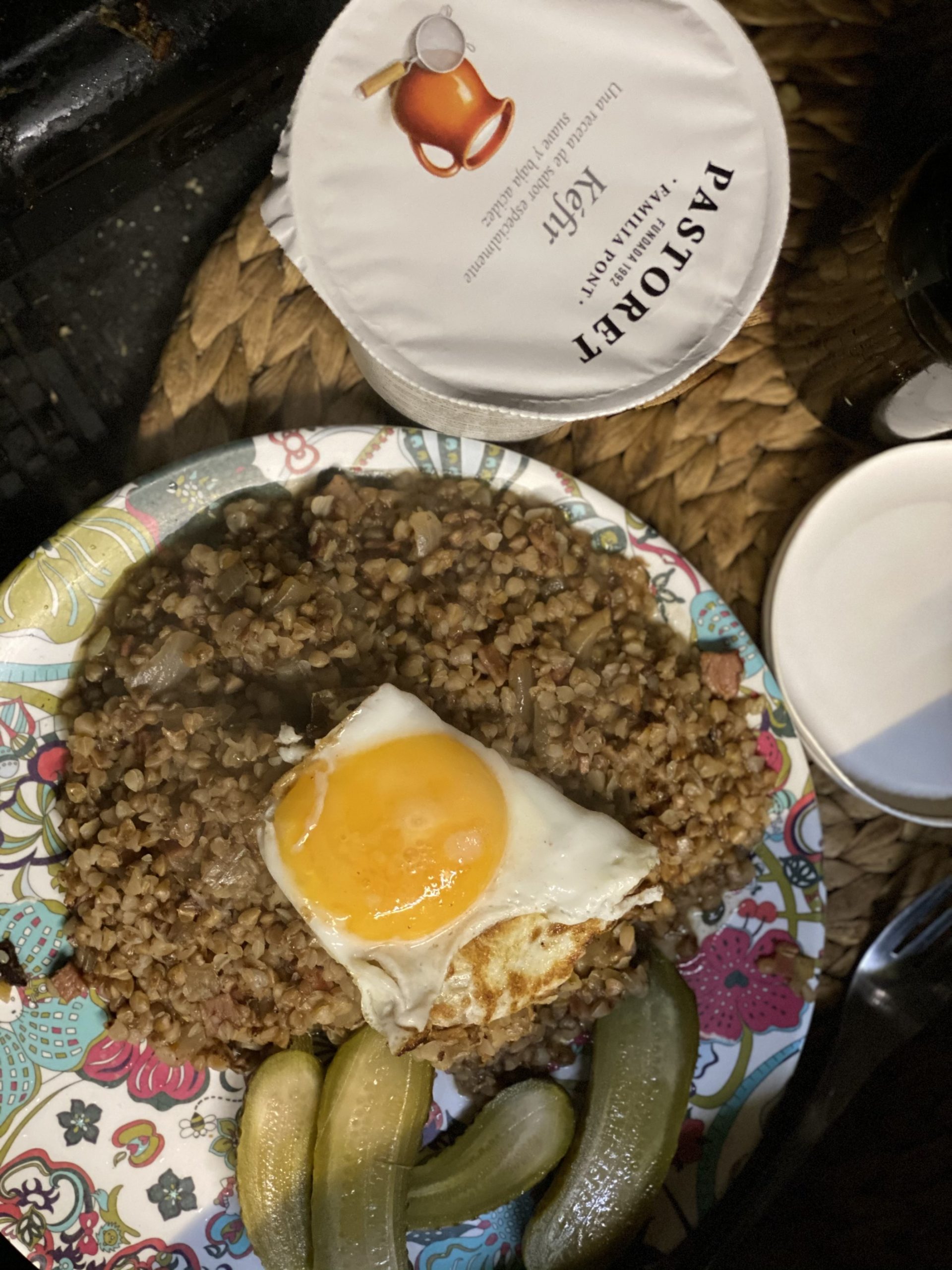
When I started writing this article in 2016, I remember that almost no large hyper or supermarket had kefir, maybe only Mercadona. Today, when I am finally ready to publish it, you can get better and worse kefirs in several fairly popular stores. Mercadona (the blue, visible in the first 3 photos) has kefir for about 1.50 EUR for 500ml, delicate but still more "sour" than the one from Dia, which in turn tastes practically like natural yoghurt (Pastoret, photos below). It's better in Carrefour and costs less than EUR 1.
Our favorite is Bio Kefir from Lidl. Since we both like kefir, we make it ourselves, we don't use bacteria, but bought kefir and fresh milk, do you want to know how to make good kefir at home?
Unfortunately, when it comes to dairy products, the Spaniards went in a completely different direction than we did - everywhere we get plant, soy and almond milk, no fat, no lactose. But kefir, buttermilk or whey are really hard to find. Leche fermentada, or fermented milk, or buttermilk, is available in Aldi and in Moroccan stores, which in some parts of Spain (especially Andalusia) are quite common.
The cheeses on the Iberian Peninsula are delicious, our favorite is probably the Portuguese Queijo Serra da Estrela - a sheep cheese that is eaten with a spoon. The second place is taken by the fresh goat's sheese queso (ES) / queijo (PT) fresco de cabra. But ... there is no cottage cheese! If we saty somewhere longer, we make our own because there is not too much philosophy in it. In other cases, we buy Queso fresco granulado from Lidl (first photo below), something that most reminds us of a home-made cottage cheese. Cheap, tasty and in small packages - one per head is often enough for breakfast. Other, cottage cheese-like, you can get in Mercadon, visible in the pictures below.
It will also be difficult to get potato flour, so you can forget about potatoe dumplings (photo below). If we feel that our language skills are sufficient, we can go to the pharmacy and buy starch. There is a good chance that we will get potato starch (very expensive), but you need to read the ingredients well (that's why I mention your language skills) so that it is definitely potato starch and not some chemical thing, because instead of dumplings, we can get something completely different and unsuitable for consumption.
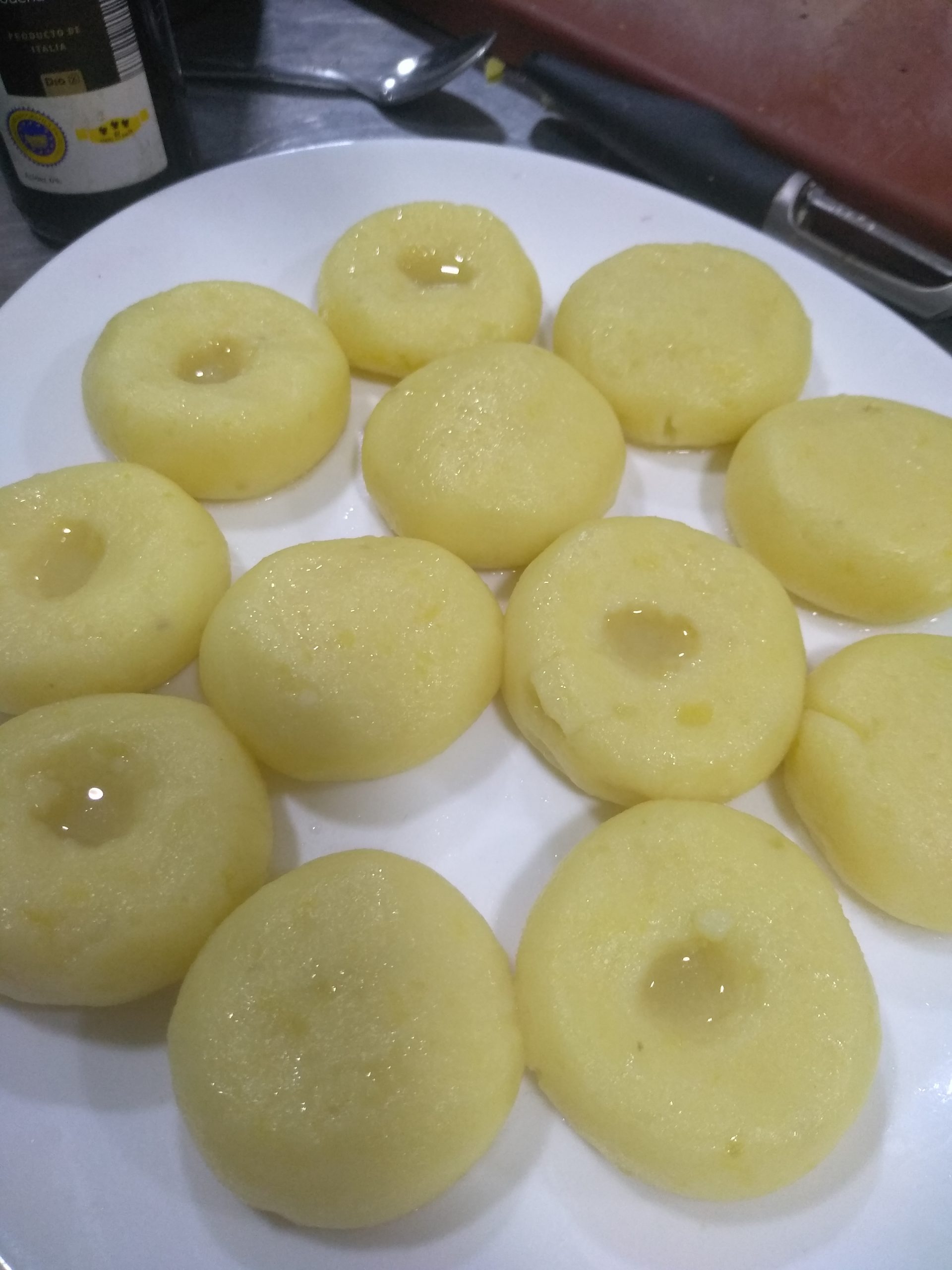
Grated horseradish (rabano picante; remember that rabano itself is a radish) is also a delicacy. Sometimes you can get it in huge supermarkets like Auchan, which is called Alcampo in Spain, or in Carrefour, but the price is not friendly to the wallet (about EUR 2.30 for a 200-250g jar). Sometimes it also appears in Aldi or Lidl assortment and then has a price more or less the same as in Poland. Once, in Fatima, Portugal, in Aldi, I came across a promotion - a jar for EUR 0.50! In the photo below, horseradish bought in an Eastern European food store - price visible, 1.5 EUR per jar.
If you like mustard, take a supply from Poland. Only sweet is available here, you can forget about spicy. We liked the Romanian mustard with horseradish the most - 280g for 1 EUR, available in food stores from Eastern Europe, but also in Arab stores, where you can also buy Maggie. One of our Spanish friends mentioned that Maggie tastes like Perrins sauce, but it's just Worcestershire sauce, so I don't quite see the similarity. The Spaniards apparently have a little distorted taste buds. Once, when I didn't have Maggie, I used soy sauce. Also far away but. If you are a Maggie fan, buy it in the Polish / Eastern European or Arabic store. Why? Due to the price. If you find Maggie available e.g. in SuperSol, which is one of the largest supermarkets in Spain, its price will be twice as high as if you bought them in the above-mentioned places.
At the beginning of the article, I wrote about dumplings called in Polish uszka (photos below). It is a special type, that we serve inside the Christmas beetroot soup. They are really small and it is impossible to make them without dried mushrooms. Unfortunately, that’s another hard to find product (due to the fact that Spanish mushrooms are different than the Polish ones) - sometimes you can buy them in Polish food stores, but unfortunately rarely. Mushroom bouillon cube does not exist here and there is probably no demand for it, because even in Polish stores I have never come across it. How to cope? Or ask a friend who is coming from Poland for a supply of dried porcini mushrooms or try frozen mushrooms from Lidl. It is not the same but they will give us a substitute for Polish Christmas Eve. What about borscht (the traditional Christmas beetroot soup)? Spanish beetroot is strange. Sometimes seems normal, other times it is very tiny, and after cooking, when cut in half, has white circles and almost completely no color. Unfortunately, the second type is not suitable for borscht because no matter how long we boil the water, it will have no taste. An interesting fact is that we buy beets in Spain in bunches, or manojos, not always by kilograms. When we get good beetroots, we have a chance to get good borscht without the addition of concentrate, which of course does not exist here and again you should go to the Polish food store to buy it.
If there is neither concentrate nor beetroot, you can add some lemon juice, possibly vinegar, lots of spices and marjoram, which, as you already know, is also unavailable. It turns out that borscht is an areal soup here.
What about sauerkraut? This pickled with wine is available in Lidl. Unfortunately, in my case it won’t work because it is in a can and my nickel and aluminum allergy does not allow me to consume food or drinks from metal containers (good for me!). Therefore, the only option is once again ... a Polish shop. Fortunately, enough of us have emigrated so that there is always one nearby. Those born under a lucky star may sometimes find Spanish chucrut, that is sauerkraut, in some hypermarket. To be honest, I haven't met a Spaniard who would like its taste yet. They don't like pickled cucumbers either (the Polish-styled pickles I mean).
Both Spain and Portugal are a paradise for fish lovers. Unfortunately not for herring lovers. Most Spaniards, when we ask them about arenque (=herring), shake their head and shrug their shoulders, and when we add that we mean such a fish, they will grin their eyes and repeat gestures that only mean a big "I don't know what you mean, there is no such fish". Of course not all of them. But majority. Fortunately, Lidl has a tin of herring in tomato sauce and it is in a permanent assortment - I can't eat it (...a can), but you can enjoy it, although it is expensive. Sometimes they have herrings in a plastic box, also in Lidl, in cream or in a cream sauce with pickled cucumber (my favorites in mustard sauce are not available!).

